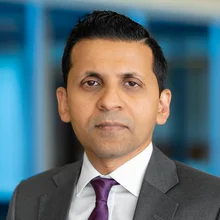
Moonshots Shelved: Banks Spend on Home-Working Tech
Senior technologists from UBS, Deutsche Bank, Nomura, SocGen and others discuss where their tech spend is being directed.
Need to know
- As the pandemic pushes banks into remote working, they are rethinking their approach to technology – and their IT priorities.
- Cloud-based ‘soft turrets’ enable traders to work from home in compliance with policies and procedures that apply in the office.
- Digital toolkits facilitate cross-regional communication through visualisations of trade flows.
- Covid-19 has emphasised the need to ensure data integrity – to remove errors and enable banking controls.
- Innovation projects are proceeding with a renewed focus on what works for trading desks and clients.
- Consultants warn big multi-year plans may be cut as banks target solutions that ensure home working is successful.
In late 2019, UBS asked 20 of its traders to experiment with a so-called soft turret system, developed by fintech firm Cloud9 Technologies. Lee Fulmer, the bank’s global head of innovation, expected the idea of replacing traders’ heavy-duty phone consoles with a software application to meet resistance.
“But at the end of the first month, all 20 of them asked to have another month to keep playing with it,” says Fulmer. The only complaint: some sales traders missed having physical buttons to quickly turn the volume down.
As it transpired, this localized experiment presaged what would become a fundamental shift in banks’ philosophy of trading technology. When the coronavirus pandemic forced them into working remotely, their tactical response set the scene for a more strategic reassessment of home-working technology across the industry.

“[The deployment] felt like a ‘mission impossible’ task, particularly in Manhattan, which was being decimated by Covid,” says Christopher Purves, co-head of execution and platform and co-head of digital at UBS. “People were unable to come into the office, and we needed to very rapidly figure out [how] to handle voice trading in a way that nobody had ever planned for.”
“Within three weeks,” adds Fulmer, “we were able to engineer a solution where we deployed Cloud9 onto Surface tablets, locked them down so they were UBS devices and we had control over them, and sent them home to people. We patched the devices into our private wires so people could talk to clients and their colleagues still in the office.”
And, in many ways, the soft turret solution has been better than the real thing.
The metadata farmed from the high-quality call recordings is rich, and enables the firm to detect the flow and sentiment of conversations, says Fulmer, who is also chief data officer at the investment bank.
Half the battle with any of these toolkits is getting widespread adoption – but now [traders] see the benefit of them
Jezri Mohideen, Nomura
The ability for traders to quickly replay something a client said on a call gave the firm comfort around its risk appetite in challenging market conditions. And, from a supervision perspective, the bank was able to prove that staff who were voice-trading at home were operating under the same governance policies and procedures that apply in the office.
Purves points to its portability as further evidence of its suitability for the post-Covid workplace.
UBS is getting behind the solution: it led a $17.5 million funding round in Cloud9, which is also backed by JP Morgan and Barclays.
Moving to Higher Ground
Other banks tell similar stories. The rapid deployment of new technologies has meant that traders working from home have, in some cases, been more productive than at the office. As commute time has been replaced by working time, productivity has been sustained—and, in some cases, even increased—and sickness rates have dropped. Dealers have handled a massive jump in trading volumes and second-quarter trading revenues are up double digits year-on-year.
The transition has met with such approval that many firms have talked of downsizing their physical real estate as they prepare to have more of their staff working remotely on a continuing basis.
Generally, working from home because of Covid has been “seamless”, says Deutsche Bank chief information officer Scott Marcar. Around 80% of the bank’s desktops globally were already virtual, although concurrency—the volume of people simultaneously logged in—became the main issue to solve.
He acknowledges “a bit of tweaking” was required to provide those on the trading floor with virtual desktops. They achieved this via Citrix, a digital workplace platform, combined with a soft turret solution from IPC. Used remotely, the combined solution is piped into the channels that physically sit inside the bank’s primary campuses or data centres.
In Nomura’s immediate response to Covid, the bank facilitated staff working from home with application programming interface-driven digital toolkits that foster cross-regional communication—for example, by employing visualizations to illustrate fixed income trade flows across products and regions, says Jezri Mohideen, global chief digital officer for Nomura’s wholesale business.

“When markets are calmer, traders will ring and have a chat with other regions,” he says. “But, with each individual trader working from home, it’s a lot easier to deliver that electronically through visuals showing all the trade flows going through the platforms. Half the battle with any of these toolkits is getting widespread adoption—but now they see the benefit of them.”
A fourth bank, Societe Generale, also says its traders have been “fully equipped” to work from home. The bank was in the process of assessing a phalanx of innovation projects—both internal and external—for incubation as the crisis evolved.
This exercise followed one in 2017 that moved 30 internal start-up ideas into development, among them the digital asset platform Forge, according to Albert Loo, its deputy head of sales for global markets with responsibility for innovation and digital transformation.
He explains that the bank had already begun rationalizing the second cohort of fintechs based on its learnings from the first—in particular, homing in on ideas that could be packaged for an external audience. But inevitably, Loo says, the crisis reconfirmed its view that funding should go to projects that maximise value for both its clients as well as its trading and sales desks.
Moonshots in the Long Grass?
In the short term, at least, the pandemic is likely to change the way in which banks allocate their technology budgets. This could mean banks turning their attention to nuts-and-bolts solutions necessary to ensure successful home working—as funding is cut for ambitious ‘moonshot’ projects or those with longer-term payoffs. Some sources cite quantum computing and even artificial intelligence projects as examples of efforts that may be consigned to the long grass for now.
Rupert Bull, co-founder of The Disruption House, a benchmarking and data-analytics business for early-stage fintechs, says innovation and change budgets, particularly at larger banks, are getting shaved as they focus on solving challenges to their immediate resilience. This means less investment in strategic, or even compliance, projects that are seen to be a long way from generating alpha or saving money.
Many large organisations are caught up in the optics of restructuring and survival. They’re just too busy dealing with the consequences of Covid
Rupert Bull, The Disruption House
“People are trying to solve problems closer to home. In that sort of world, it’s all hands to the pump, just to keep the lights on,” he says. “Many large organizations are caught up in the optics of restructuring and survival. They’re just too busy dealing with the consequences of Covid.”
A second fintech consultant, Oliver Bussmann, founder of Bussmann Advisory and the former chief information officer at UBS, agrees. He says big multi-year transformation projects are being put on hold at tier-one banks “because that has an immediate effect on capital expenditure and cashflow. There is much more focus on short-term impact and cost-efficiency. The investment priorities have changed significantly since the beginning of the year”.
Fintech adviser Stuart McClymont, managing director of consulting services at JDX, thinks many big banks “are, in fact, realizing they may already have the necessary tools in their stable. Either they’re invested in them, or they’re in incubation … So, they may stop any new investment and just double down on optimising existing digital transformations”.
Maintaining Integrity
In practice, the new technology priorities are more fundamental than experimental.
“What you discover with Covid-19 is that you need to make sure you focus not on things that are ancillary for the trading or sales desk, but on those most important for us and our clients,” says SocGen’s Loo.

“In a situation like Covid, you immediately see what is useful and what is not. And, actually, we had already started on this path of rationalization.”
The bank is not alone in prioritizing technological integrity.
At Nomura, in addition to accelerating the electronification of workflows, Covid-19 has increased the bank’s focus on the operational robustness of its platforms, says Mohideen.
“With the explosion of the ‘data universe’, it is critical to have a unified data lake which allows AI-driven, in-depth analysis to run seamlessly in real time. Having a unified data framework is essential to avoid operational inefficiencies, such as poor data quality, data duplication across departments, lack of data ownership in business, as well as the inability to run large-scale analysis across businesses and regions.”
“We’re trying to fast-track that now,” he adds, explaining that this includes putting more data into the cloud and using it for AI: “We’ve been continuously trying to experiment with the usage of data for AI in the trading and sales businesses, as well as within the corporate function. Can we optimize capital, derive valuable insights, fight financial crime, or do trade surveillance better? How can we detect best-execution behaviors? Can we also extract alpha using market data?”
To do that effectively, he concludes, would mean building further on Nomura’s efforts to establish a unified data framework across its organization.
Deutsche Bank is also of the view that a unified data framework will be a key element in making its systems robust enough to cope with future crises.
Business continuity planning is no longer a large redundant building in Croydon, Reading or Staines. It is planning for everybody catching the same cold and a fully distributed workforce
Mark Beeston, Illuminate Financial
The technology strategy in Deutsche’s investment banking operations has so far largely been a “simplification and electronification play”, according to Marcar. But, as the bank exits its equities business to focus on fixed income and currencies, it is, like many banks, working on “getting the data right” to enable full straight-through processing.
“If anything,” he says, “Covid just reaffirmed the need to remove people from the process and take errors out, which does lead into making sure your banking controls are based on good data.”
Marcar says the firm solved its concurrency squeeze by upgrading the capacity of remote access servers in all locations and creating a dedicated trader environment to ensure no latency issues. It also increased the network bandwidth for all remote access circuits.
Home Remedies
But as banks face potentially difficult choices in tech spending, savings might equally be found in other areas, such as reviews of property portfolios. With large swathes of their workforces at home, and that experiment now seen as a huge success, banks may not fully return to their offices until fears over the coronavirus fully subside—or perhaps never again in pre-pandemic mode. Given that remote working may persist for some time, banks are reconsidering the size of existing offices and the utility of disaster recovery buildings.
At Deutsche, Marcar confirms that the bank is asking itself some serious questions: “Do we need to be in so many buildings? Do we need to have so many physical disaster recovery sites? Or can disaster recovery be more remote?”
Another fintech expert, Mark Beeston, founder of venture capital firm Illuminate Financial, sums up the position: “In the UK, business continuity planning is no longer a large redundant building in Croydon, Reading, or Staines. It is planning for everybody catching the same cold and a fully distributed workforce.”
In Switzerland, too, Bussmann believes many offices in its financial centers will primarily be transformed into meeting spaces: “I think over the next 12–18 months minimum, the working-from-home infrastructure will continue to be utilized. I hear banks are considering reducing their office space by 20–30%. In the Swiss environment, certain banks are going back to not more than 40–50% staffing in offices. You just can’t with the social distances required at one or two meters.”
The focus of banking technology, for the time being, it would seem, is locked down on the home.
Further reading
Only users who have a paid subscription or are part of a corporate subscription are able to print or copy content.
To access these options, along with all other subscription benefits, please contact info@waterstechnology.com or view our subscription options here: http://subscriptions.waterstechnology.com/subscribe
You are currently unable to print this content. Please contact info@waterstechnology.com to find out more.
You are currently unable to copy this content. Please contact info@waterstechnology.com to find out more.
Copyright Infopro Digital Limited. All rights reserved.
As outlined in our terms and conditions, https://www.infopro-digital.com/terms-and-conditions/subscriptions/ (point 2.4), printing is limited to a single copy.
If you would like to purchase additional rights please email info@waterstechnology.com
Copyright Infopro Digital Limited. All rights reserved.
You may share this content using our article tools. As outlined in our terms and conditions, https://www.infopro-digital.com/terms-and-conditions/subscriptions/ (clause 2.4), an Authorised User may only make one copy of the materials for their own personal use. You must also comply with the restrictions in clause 2.5.
If you would like to purchase additional rights please email info@waterstechnology.com
More on Emerging Technologies
This Week: Startup Skyfire launches payment network for AI agents; State Street; SteelEye and more
A summary of the latest financial technology news.
Waters Wavelength Podcast: Standard Chartered’s Brian O’Neill
Brian O’Neill from Standard Chartered joins the podcast to discuss cloud strategy, costs, and resiliency.
SS&C builds data mesh to unite acquired platforms
The vendor is using GenAI and APIs as part of the ongoing project.
Chevron’s absence leaves questions for elusive AI regulation in US
The US Supreme Court’s decision to overturn the Chevron deference presents unique considerations for potential AI rules.
Reading the bones: Citi, BNY, Morgan Stanley invest in AI, alt data, & private markets
Investment arms at large US banks are taken with emerging technologies such as generative AI, alternative and unstructured data, and private markets as they look to partner with, acquire, and invest in leading startups.
Startup helps buy-side firms retain ‘control’ over analytics
ExeQution Analytics provides a structured and flexible analytics framework based on the q programming language that can be integrated with kdb+ platforms.
The IMD Wrap: With Bloomberg’s headset app, you’ll never look at data the same way again
Max recently wrote about new developments being added to Bloomberg Pro for Vision. Today he gives a more personal perspective on the new technology.
LSEG unveils Workspace Teams, other products of Microsoft deal
The exchange revealed new developments in the ongoing Workspace/Teams collaboration as it works with Big Tech to improve trader workflows.







